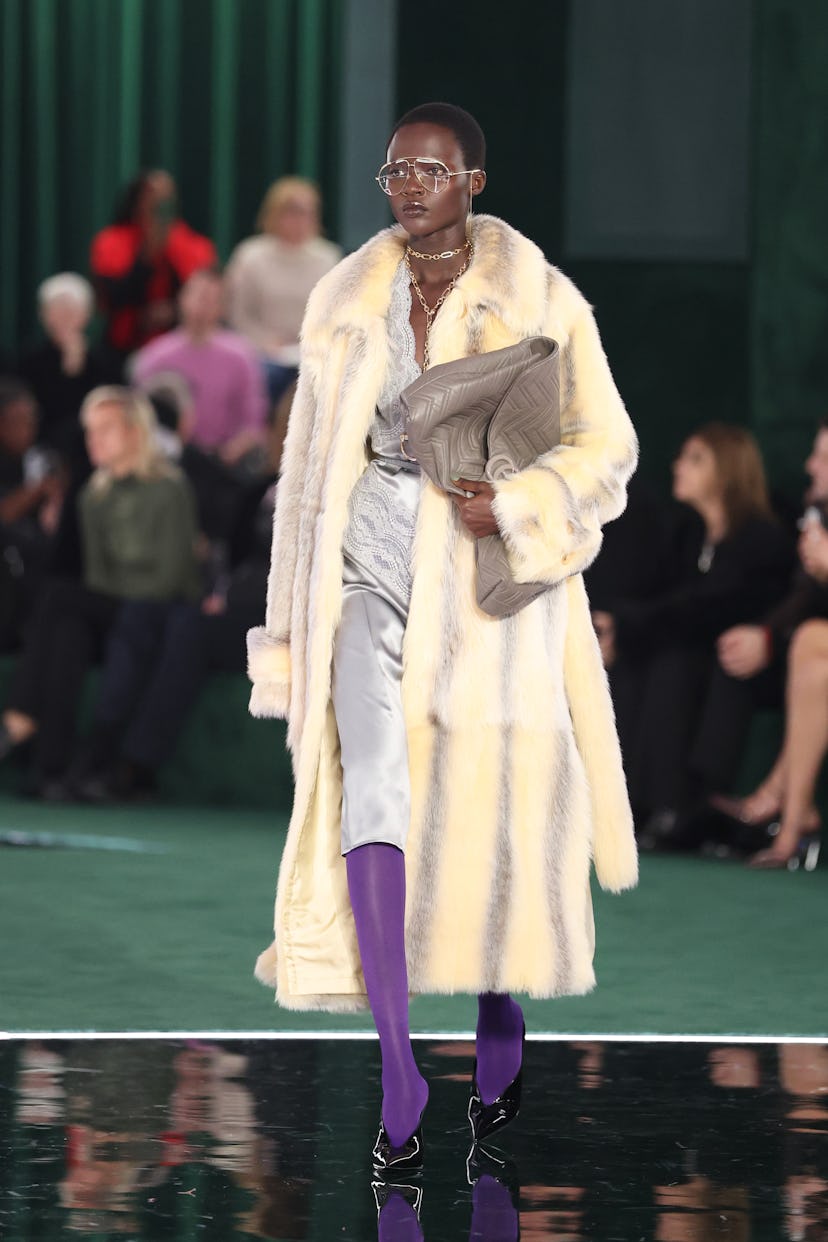Gucci Leans All the Way Into Retro for Fall 2025
The collection, inspired by house founder Guccio Gucci, pulled classic brand references—with a particular focus on ’70s flair.

Gucci’s fall 2025 show on February 25, the first day of Milan Fashion Week, opened with a look that could have come straight from the 2021 biographical crime-drama House of Gucci, as worn by Patrizia Reggiani, played by Lady Gaga. We’re talking chunky faux fur, a plunging lilac lace bodysuit, a wool pencil skirt, and oversize, geek-chic aviator glasses. This was the first collection designed by the Gucci design studio since former creative director Sabato de Sarno’s departure earlier this month, and all eyes were on the archives. Looking back at the past and the very vintage-leaning aesthetic of the brand’s early ready-to-wear, the Italian house paid tribute to founder Guccio Gucci in the form of its fall 2025 collection.
The oversize outerwear and mix of ladylike bags with gold, dangling horsebit necklaces anchored the retro vibe of the collection. Even the venue, which resembled a deeply chic midcentury modern fashion villain’s lair, spoke to the concept (there was a mirrored ceiling and lit-up, interlocked double-G-logo-shaped runway). Models paraded to a live orchestra playing a custom cinematic soundtrack that sounded like it was straight out of a James Bond flick.
Meanwhile, the entire coed collection pulled classic house references from style tropes of the 1950s through the 1990s, with a particular focus on that 1970s flair which has always been at home at Gucci. The label may have been founded in 1921, but it didn’t launch ready-to-wear until 1981. Gucci creative directors of the past have constantly referenced the era—such as Tom Ford pulling from the glittering, hedonistic days of Studio 54, or Alessandro Michele focusing on the maximalist accessories and varied prints of the decade.
Chunky tweed coats, silky lace slipdresses, and niche styling tricks like scarves over baseball caps were everywhere. Little wool dresses with big, statement-making buttons popped against the immersive, minimalist, somewhat corporate set. There were twinsets, and only one formal floor-length gown, which came with a minimalist bent and was done in subtle, metallic black. Elsewhere, big shoulders meshed with pencil skirts, fluffy shoes, and embellished sweaters in shades of purple and acid green.
The Gucci design studio layered signature silhouettes with madcap Gucci-fied touches, such as a heavily embellished low-rise skirt in tangerine orange, or a deep purple-gray monochromatic suit with a supersize blazer and a logo duffle bag. Liquid-like velvets and men’s suits with clean lines and graphic shapes were styled with those big, thick glasses.
The world may be wondering what’s next for one of the most iconic brands in fashion. If this collection gave any hints, it was that the future Gucci will be all about the classics with a hint of those very distinct house codes. Hues of ochre and burnt sienna, plus purple tights and crystal-covered sets, kept things interesting for a brand in transition. To close the show, the members of the studio team entered the venue and took a bow together.
This article was originally published on